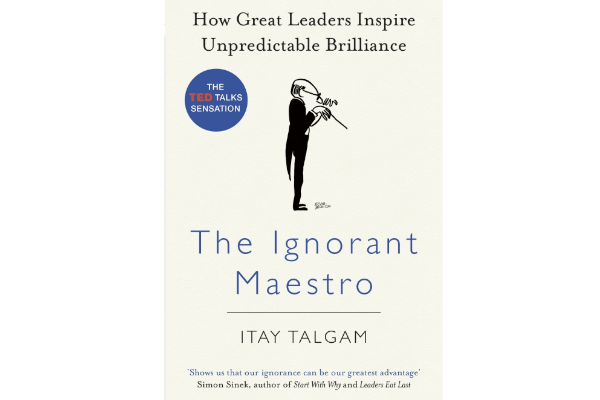One of the critical levers to help you achieve your business goals is the ability to accurately identify, align, and develop leadership potential within your organization. We’ve consistently observed that success in leadership identification is not just about spotting strong performers – it’s about understanding who is capable of scaling up, adapting, and driving meaningful impact in a constantly evolving world.
Why Identifying Leadership Potential Matters More Than Ever
Table of Contents
In today’s volatile, uncertain, complex, and ambiguous (VUCA) environment, identifying future-ready leaders has become one of the most pressing needs for talent and HR professionals. Organizations that fail to do so risk stagnation, disengagement, and high turnover. In contrast, those that get this right create strong internal pipelines, foster a resilient leadership bench, and stay ahead of the curve in innovation and performance.
However, the challenge lies in identifying true leadership potential – not just based on past performance or charisma, but through deeper indicators of future capability.
From what we have seen, one of the common pitfalls in assessing leadership potential is an over-reliance on subjective inputs. Manager biases, recent performance trends, or cultural perceptions often cloud objective evaluation. To mitigate this, we strongly advocate for structured and moderated discussions that include both direct managers and skip-level leaders. When facilitated thoughtfully, leadership councils can serve as invaluable platforms for surfacing talent with genuine potential.
Below are some critical markers we recommend considering when assessing leadership potential. These are not theoretical attributes – we’ve validated their relevance and impact through our engagements with hundreds of leaders over the past decade.
1. Orientation to Development
a) Openness to Feedback
In our workshops and coaching engagements, one trait that consistently differentiates high-potential employees is their receptiveness to feedback. It’s not just about accepting feedback, but actively seeking it, reflecting on it, and acting on it. Such individuals are growth-oriented and demonstrate emotional maturity.
b) Learning Agility
Learning agility – the ability to learn, unlearn, and relearn—has emerged as a non-negotiable trait. In one of our recent client engagements, we saw a mid-level manager adapt rapidly to three role changes in two years, picking up domain knowledge each time while mentoring peers. That’s a textbook example of agility.
We recommend assessing learning agility through scenario-based assessments and longitudinal observation. The question to ask is: How quickly can this person thrive in unfamiliar situations?
2. Alignment to Culture and Values
Organizations thrive when their leaders model the cultural ethos. In our experience, leaders who are aligned to the core values of their company become multipliers – they not only demonstrate those values themselves but also hold others accountable to them.
When assessing leadership potential, ask:
- Does this person exemplify the company’s values in high-pressure situations?
- Do they act as cultural ambassadors informally?
- Can they influence others positively without positional authority?
We’ve seen that cultural misalignment – even in otherwise talented individuals – often becomes a bottleneck to long-term success.
Related Reading: Shared Values: The Magic Glue Of Team Work
3. Readiness for a VUCA World
a) Adaptability
The best leaders we’ve worked with are those who remain calm and resourceful in the face of change. One CHRO once shared with us how a potential leader in their team handled a last-minute merger integration by rallying cross-functional teams and simplifying ambiguity for others. It was a powerful reminder that adaptability isn’t just personal resilience – it’s about enabling others through change.
b) Navigating Ambiguity
The ability to work without clear direction and still deliver impactful outcomes is a hallmark of future leaders. During our assessment centers, we often observe how participants handle complex, incomplete information. The ones who ask the right questions, distill clarity, and move forward confidently stand out.
c) Innovation Mindset
Innovation doesn’t always mean groundbreaking inventions. In our experience, it’s often about small process tweaks or applying old tools in new ways. Does the employee question the status quo? Are they bringing in new thinking? Encourage managers to provide real examples.
Related Reading: How To Cope With Change?
4. Human-Centered Leadership Traits
The future of leadership is deeply human. With remote and hybrid work becoming the norm, leaders are now expected to bring empathy, flexibility, and inclusivity to the forefront.
a) Empathy and Emotional Intelligence
We’ve seen firsthand how empathetic leadership impacts morale, engagement, and performance. During one of our programs on emotional intelligence, a participant shared how simply listening more deeply helped them defuse conflict and build trust across teams. These are the micro-moments that build macro impact.
Related Reading: Harnessing Emotional Intelligence: Key Takeaways from Daniel Goleman’s Working with Emotional Intelligence
b) Inclusivity and Flexibility
Future leaders must be able to engage across diverse mindsets and working styles. Are they inclusive in decision-making? Do they value diverse perspectives? Are they flexible with how goals are met?
c) Facilitating Collaboration in Hybrid Teams
Managing hybrid teams is no longer a niche skill – it’s core leadership capability. In our L&D sessions, we now frequently coach leaders on how to build team cohesion and drive collaboration across physical and virtual boundaries. Leaders with potential must already be demonstrating this fluency.
Related Reading: Organisation’s Guide On Efficiently Implementing A Hybrid Working Model
5. Strategic Execution
Beyond vision and empathy, execution remains a core leadership muscle. We often assess whether individuals:
- Can translate strategy into actionable plans
- Mobilize teams around a shared purpose
- Deliver outcomes consistently despite constraints
This requires more than just being organized – it involves clarity of thought, prioritization, and follow-through. One organization we worked with created shadow boards to observe how mid-level leaders contributed to strategic discussions. It was an excellent way to evaluate strategic acumen.
Related Reading: Driving Results
6. Influence Without Authority
In our leadership development programs, we often stress the importance of lateral leadership. Future leaders frequently operate in matrixed environments, where influence matters more than formal power. Observe whether an employee:
- Can align stakeholders across functions
- Builds informal networks of trust
- Gets buy-in without escalating
These are subtle yet significant indicators of scalable leadership potential.
Related Reading: Book Learning: Influence Without Authority by Allan R. Cohen
7. Drive and Accountability
Leadership potential isn’t only about capability – it’s also about intent. We look for individuals who:
- Consistently own outcomes
- Take initiative beyond their KRAs
- Show a deep sense of purpose and ambition
In one case, a participant in our high-potential program proactively took charge of a failing initiative and turned it around – without being formally assigned. That intrinsic motivation to lead from the front is gold.
Related Reading: 4 Steps To Accountability
Structuring the Identification Process
To reduce bias and increase objectivity in identifying leadership potential, we suggest the following practices:
- Create a Leadership Council: Include direct managers, skip-level managers, and an HR facilitator. Ensure diversity in perspectives.
- Use a Capability Framework: Base discussions around specific traits like the ones outlined above.
- Encourage Evidence-Based Dialogue: Ask for real examples, not just adjectives. Replace “she’s good with people” with “she resolved an inter-team conflict by…”
- Track Progress Over Time: Leadership potential should be validated over quarters, not weeks.
Final Thoughts for L&D and HR Professionals
The world of work is shifting. From command-and-control models, we are now embracing human-centered, adaptive, and purpose-driven leadership. As L&D professionals and HR leaders, our role is not just to identify talent but to nurture it – through development journeys, mentoring programs, stretch assignments, and regular feedback loops.
In our ongoing work with organizations, we’ve noticed that the best leadership pipelines are built through a blend of science, structure, and human judgment. Leadership potential is not an abstract trait; it’s a set of observable behaviors, mindsets, and motivations that unfold over time.
Are the markers above enough? Possibly not. Every organization is different, and you may need to add your own nuances based on culture, industry, and business needs. But what we know for sure is this: thoughtful, inclusive, and evidence-backed identification of leadership potential is a strategic imperative.
Have you tried other methods or criteria that have worked well for your teams? Do share your thoughts with us – we’d love to learn from your experiences too.










